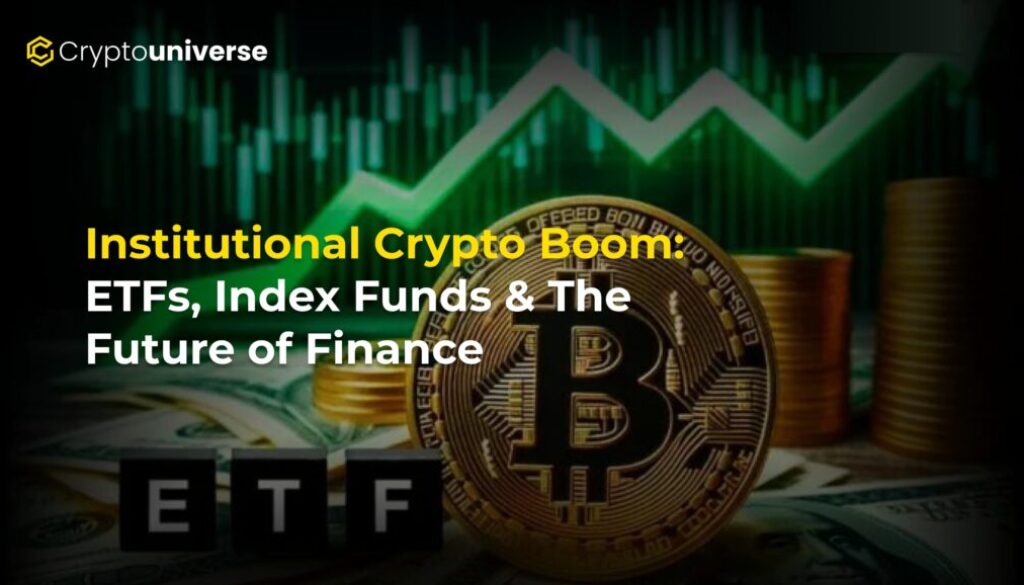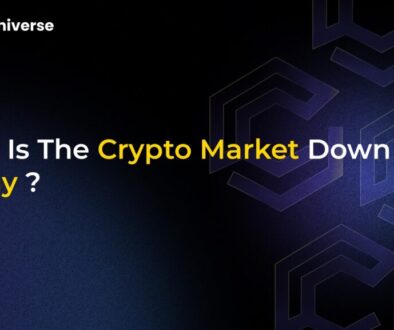Institutional Crypto Investment Vehicles: How ETFs, Index Funds, and Regulatory Shifts Are Reshaping Finance

Meta Description: Discover how crypto ETFs, index funds, and regulatory innovations are unlocking institutional crypto adoption. Explore trends, risks, and why this revolution matters.
Introduction: The Institutional Crypto Gold Rush Is Here
Gone are the days when Bitcoin and Ethereum were dismissed as speculative toys for retail traders. Today, Wall Street giants like BlackRock, Fidelity, and Goldman Sachs are racing to build bridges between traditional finance and the crypto universe. The catalyst? Institutional crypto investment vehicles—ETFs, index funds, and regulated trusts designed to meet the demands of hedge funds, pensions, and asset managers.
This seismic shift isn’t just about price rallies; it’s about reshaping global finance. Let’s unpack the trends, regulatory battles, and opportunities defining this new era—and why your portfolio might never look the same.
- The Rise of Institutional Crypto Investment Vehicles
Institutional investors demand security, compliance, and scalability—qualities rarely associated with early crypto exchanges. Enter purpose-built vehicles:
- Crypto ETFs: Exchange-traded funds (ETFs) like the recently approved Bitcoin futures ETFs allow investors to gain exposure without holding actual crypto. Spot Bitcoin ETFs, still under SEC scrutiny, could be a game-changer.
- Index Funds: Mirroring benchmarks like the S&P Crypto Index, these funds diversify risk across top assets (e.g., BTC, ETH).
- Trusts & Futures: Products like Grayscale Bitcoin Trust (GBTC) and CME Bitcoin futures offer regulated entry points.
Why the surge? Institutions crave exposure to crypto’s high-growth potential but need frameworks that align with fiduciary duties.
Keyword Alert: Explore how Bitcoin ETFs work on CryptoUniverse.blog.
- Why Institutions Are Flocking to Crypto
- Portfolio Diversification: Crypto’s low correlation with stocks/bonds hedges against market downturns.
- Inflation Hedge: Bitcoin’s fixed supply appeals amid fiat currency devaluation.
- Yield Generation: Staking and DeFi protocols offer returns unmatched by traditional bonds.

A 2023 Fidelity study revealed that 58% of institutional investors now hold digital assets—up from 36% in 2021.
- 2023’s Defining Trends
- Crypto ETFs Go Mainstream
The SEC’s cautious approval of futures-based ETFs (e.g., ProShares Bitcoin Strategy ETF) has opened the floodgates. BlackRock’s spot Bitcoin ETF application—and similar bids from Ark Invest and VanEck—could ignite a $50B+ market.
- Asset Managers Embrace Crypto Integration
Vanguard now offers crypto-linked portfolios, while Morgan Stanley integrates blockchain analytics into wealth management tools. The message? Crypto is no longer a niche—it’s a core asset class.
- Regulatory Clarity (Finally?) on the Horizon
The EU’s Markets in Crypto-Assets (MiCA) framework and U.S. congressional hearings signal progress. Key debates focus on custody rules, transparency, and investor protection.
Deep Dive: How MiCA impacts European investors at CryptoUniverse.blog.
- Regulatory Hurdles: Walking the Compliance Tightrope
The SEC’s skepticism persists, citing volatility and fraud risks. Yet, recent court rulings favoring Grayscale’s ETF conversion bid suggest change is inevitable. Institutions want:
- Standardized custody solutions (e.g., Coinbase Custody).
- Auditable reserves (post-FTX collapse).
- Tax and reporting frameworks.
Regulation isn’t a barrier—it’s the key to unlocking trillion-dollar inflows.
- The Road Ahead: Risks, Rewards, and Predictions

Risks:
- Regulatory whiplash.
- Market manipulation in illiquid altcoins.
- Custody failures (remember QuadrigaCX?).
Rewards:
- First-mover advantage in a $10T+ asset class.
- Democratizing access to blockchain innovation.
Predictions for 2024:
- Spot Bitcoin ETF approvals.
- Tokenized real-world assets (RWAs) in institutional portfolios.
- Hybrid DeFi/TradFi yield products.
- Why This Revolution Matters
Institutional crypto vehicles aren’t just about profits—they’re reshaping finance’s DNA:
- Legitimacy: Converting skeptics by meeting strict compliance standards.
- Liquidity: Deepening markets to reduce volatility.
- Innovation: Fueling blockchain adoption in sectors like supply chain and healthcare.
Conclusion: The Future Is a Hybrid
The lines between crypto and traditional finance are blurring fast. Whether you’re an investor, regulator, or tech enthusiast, one thing is clear: institutional-grade vehicles are the bedrock of crypto’s next chapter.
Stay ahead of the curve with cutting-edge analysis. Follow CryptoUniverse.blog for expert insights on ETFs, regulations, and the institutions driving crypto forward.
CTA: Liked this article? Share it and tag #CryptoUniverse to join the conversation! For daily updates, subscribe at CryptoUniverse.blog.


